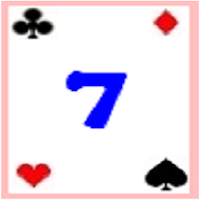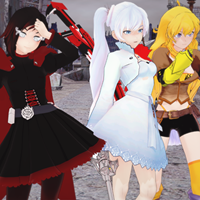If you're just starting to master the basics of survival in Minecraft, learning how to light a campfire is one of the most crucial skills that will prove invaluable from the very first days. Far from being just a decorative item, as some newcomers might assume, a campfire offers a multitude of benefits essential for thriving in the game's challenging environment.
 Image: ensigame.com
Image: ensigame.com
A campfire in Minecraft is not only a source of light but also an excellent tool for cooking food and warding off enemies. In this comprehensive guide, we'll delve into how to create a campfire, the materials required, and how to maximize its potential in your gameplay.
Table of Contents
- What is it?
- How to create?
- Main functions of the fire
- Extra features and life hacks
- What is the difference between a campfire and a soul campfire?
- How to effectively use a campfire in survival?
What is it?
A campfire is a versatile block in Minecraft that serves multiple functions simultaneously. It illuminates the area, helps cook food, acts as a signal fire, and can even be integrated into mechanisms and decorations. Unlike other light sources, it doesn't require fuel, and its smoke can rise high into the sky, making it an excellent landmark.
You can safely walk through a campfire without taking damage, as long as you avoid standing directly on it. However, it inflicts damage on mobs and players who linger too long. In addition to the standard campfire, Minecraft also features the soul campfire, which has a blue flame, repels piglins, and emits slightly less light.
 Image: ensigame.com
Image: ensigame.com
A campfire can be extinguished using water or a shovel and then relit with flint and steel, lava, or fire arrows.
How to Create?
Creating a campfire in Minecraft is simpler than surviving your first night amidst creepers. You'll need three logs, three sticks, and one piece of coal or charcoal. The type of log—spruce, birch, or any other—doesn't matter and won't affect the campfire's performance.
 Image: ensigame.com
Image: ensigame.com
The crafting process is straightforward: open your crafting table, place the logs in the bottom row, arrange the sticks in a triangle above them, and position the coal or charcoal in the center. Voila! You now have a cozy, fuel-free source of light and heat that won't be extinguished by rain and is always ready to crackle warmly.
 Image: ensigame.com
Image: ensigame.com
Unfortunately, Minecraft doesn't allow you to strike sparks with sticks, so it's best to gather the necessary materials in advance rather than hoping for a miracle.
Main Functions of the Fire
The campfire in Minecraft is far more than just a decorative element; it's an essential survival tool with multiple functions:
- Lighting and Mob Protection: It emits light comparable to a torch, deterring zombies, skeletons, and other mobs from your base. However, creepers can still approach, so consider adding fences for extra security.
- A Free Kitchen: Unlike a furnace, which requires fuel, a campfire allows you to cook up to four pieces of meat at once without any coal. Just be vigilant, as cooked food drops to the ground and can be lost if not collected promptly.
- A Signal Fire: Its smoke column is visible from a distance. By placing hay above it, the smoke rises even higher, making it an ideal landmark to avoid getting lost or to signal your camp's location to friends.
- A Mob Trap: Standing on a campfire inflicts damage over time. This can be used to create traps for mobs or even to playfully torment friends.
- A Decorative Element: It adds a charming touch to medieval villages, campsites, or fireplaces. Extinguish it with a shovel to use its texture for a cozy hearth.
Don't underestimate this small but incredibly useful block. It enhances life in Minecraft, making it easier and more atmospheric.
Extra Features and Life Hacks
Beyond being a light source and cooking tool, the campfire boasts several features that can enhance your gameplay:
- A Smoke Beacon: Place hay above the campfire, and the smoke will rise up to 25 blocks high, serving as an excellent landmark, especially in dense forests or vast plains.
- A Safe Way to Harvest Honey: Position a campfire under a beehive to gather honey or honeycombs without provoking the bees. The smoke calms them, preventing attacks—even from an extinguished campfire.
- An Extinguished Campfire – A Cool Decoration: Hit a campfire with a shovel to extinguish it, turning it into a versatile texture for sidewalks, fireplaces, or minecart tracks, perfect for creative builders.
- An Automatic Mob Trap: With its 1 damage per second rate that doesn't destroy items, it's ideal for trapping mobs in enclosures for farms, especially for chickens or cows.
- An Infinite Campfire Without Accidental Fires: Unlike lava and fire, a campfire won't ignite trees or buildings, making it safe for use in wooden structures.
- A Fire That You Can Turn On and Off: Extinguish it with a shovel, water, or a water bottle, and relight it with flint, fire arrows, or lava. This is particularly useful for controlling fire in wooden houses.
 Image: ensigame.com
Image: ensigame.com
What is the Difference Between a Campfire and a Soul Campfire?
While both campfires and soul campfires may appear similar at first, they have notable differences. The soul campfire features a blue flame, which not only looks different but also offers unique properties. It emits slightly less light than the regular campfire but repels piglins, making it invaluable for navigating the Nether without attracting unwanted attention.
The soul campfire is not merely decorative; it can be used in mechanisms and with specific mobs. It's essential for creating trap systems where the blue flame plays a key role or for generating various effects with other blocks and mechanisms.
For decoration, the regular campfire is often preferred due to its brighter light and suitability for creating cozy camps or village fireplaces. In contrast, the soul campfire lends a mystical ambiance, making it ideal for themes related to Nether structures or dark atmospheres.
 Image: ensigame.com
Image: ensigame.com
How to Effectively Use a Campfire in Survival?
To make the most out of a campfire in Minecraft, consider its strategic placement and multifaceted uses. Position it near your camp or in the center of your base to illuminate the area and deter mobs. While it keeps most enemies at bay, remember that creepers might still approach, so fortify your area with fences or walls.
Use the campfire for cooking when coal is scarce. It allows you to cook meat, fish, or potatoes without any fuel, accommodating up to four pieces at once. However, be attentive, as food left too long will burn, leaving you with nothing but regret.
If you're working with bees, a campfire placed under a beehive will pacify them, enabling you to collect honey safely. For decorative purposes, campfires enhance the atmosphere of campsites or rustic homes, adding both light and a realistic crackling sound.
Lastly, leverage its defensive capabilities by incorporating it into mob traps. Trapping zombies or skeletons in a pit with a campfire will cause them to take damage. This setup is particularly effective for farms, and it can add a playful element when used to tease friends.
 Image: ensigame.com
Image: ensigame.com
In conclusion, the campfire is not just a decorative element but a versatile tool that enhances survival, illuminates the area, allows for cooking, and provides protection from mobs. Its functions significantly expand the player's capabilities, especially when used creatively and strategically. Whether you're building a cozy camp or setting up a trap for enemies, the campfire will always safeguard your comfort and safety.






